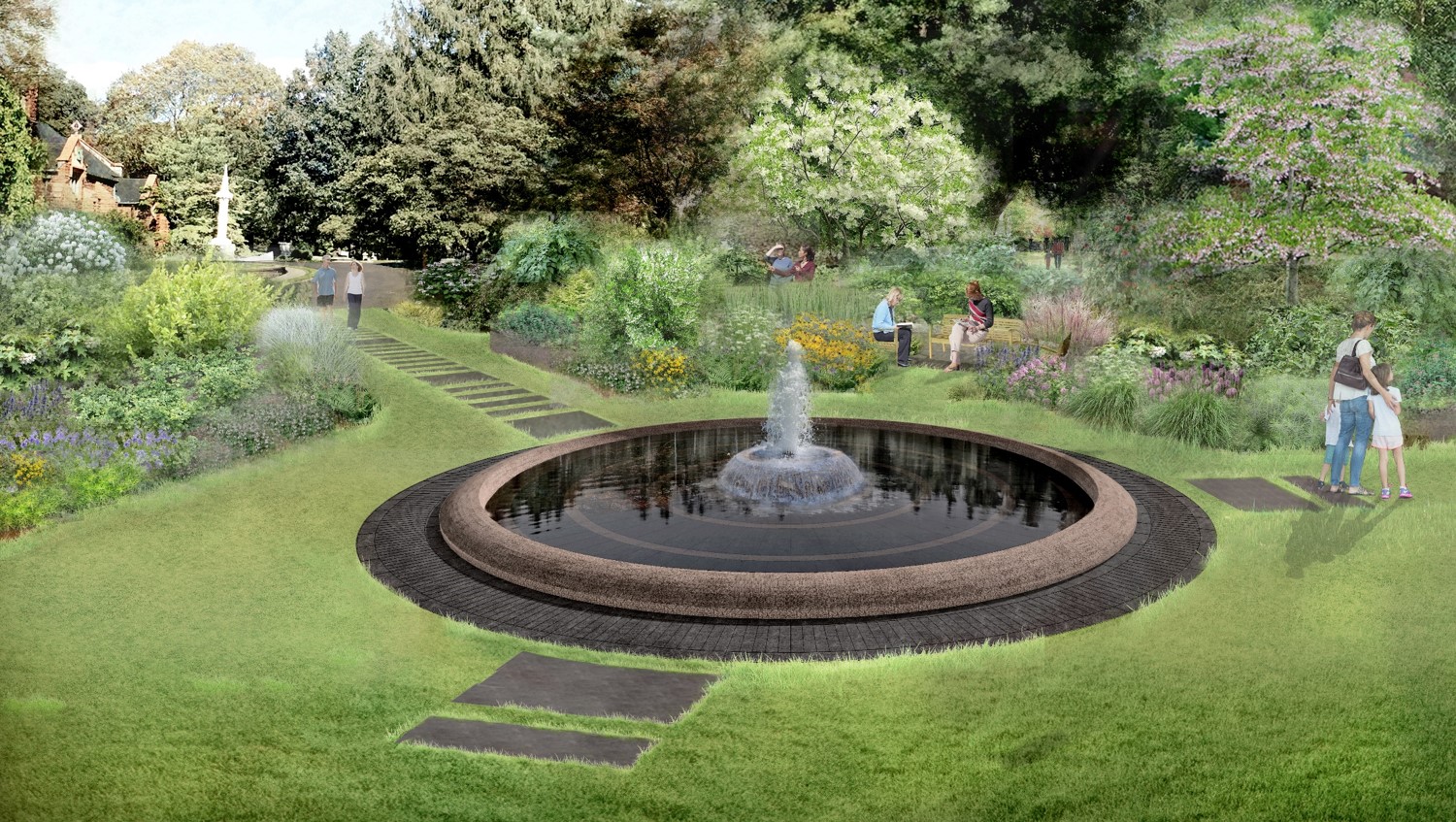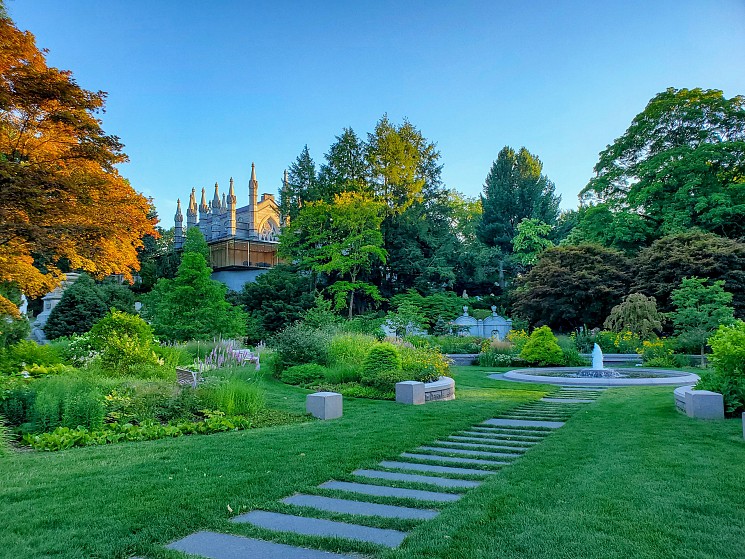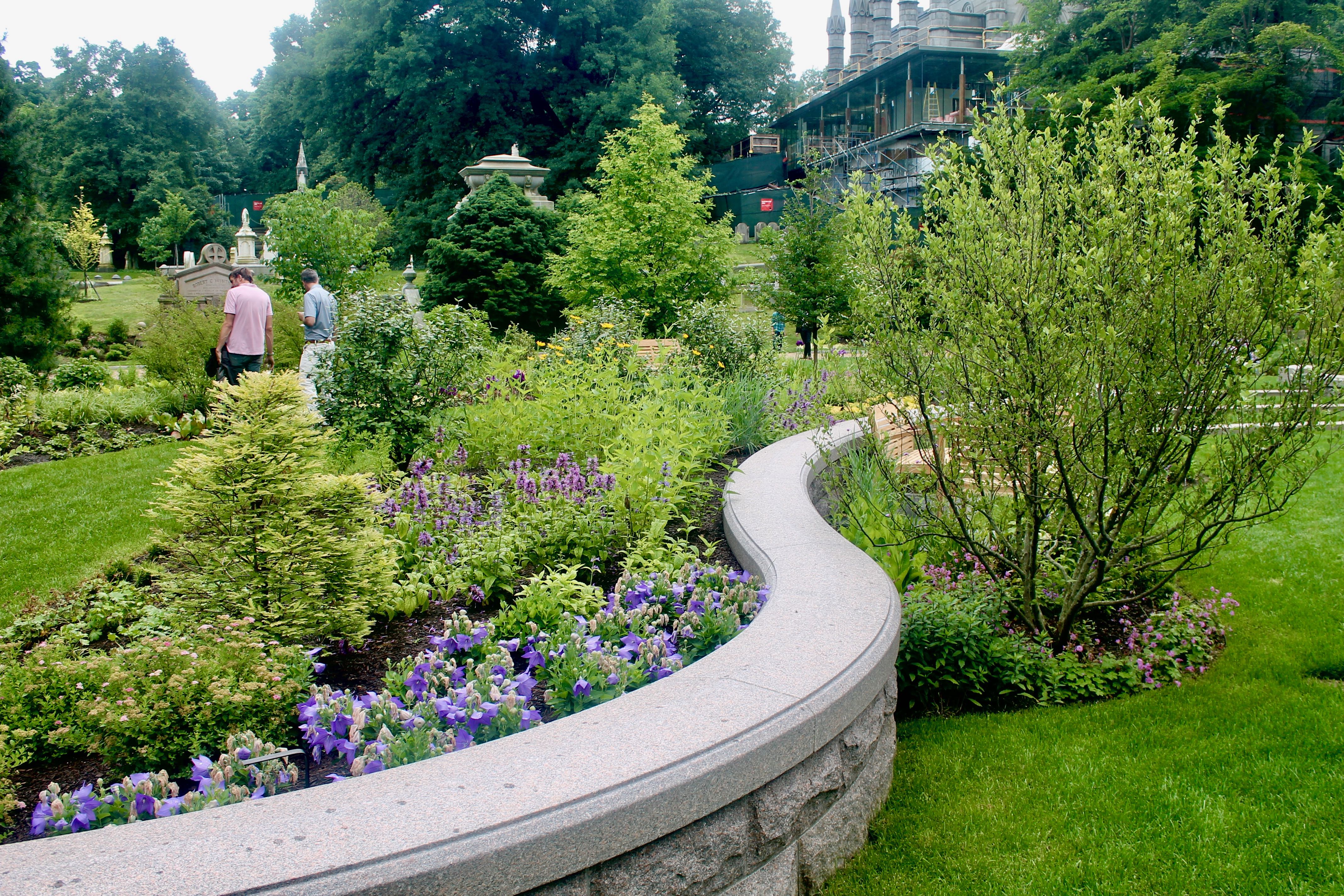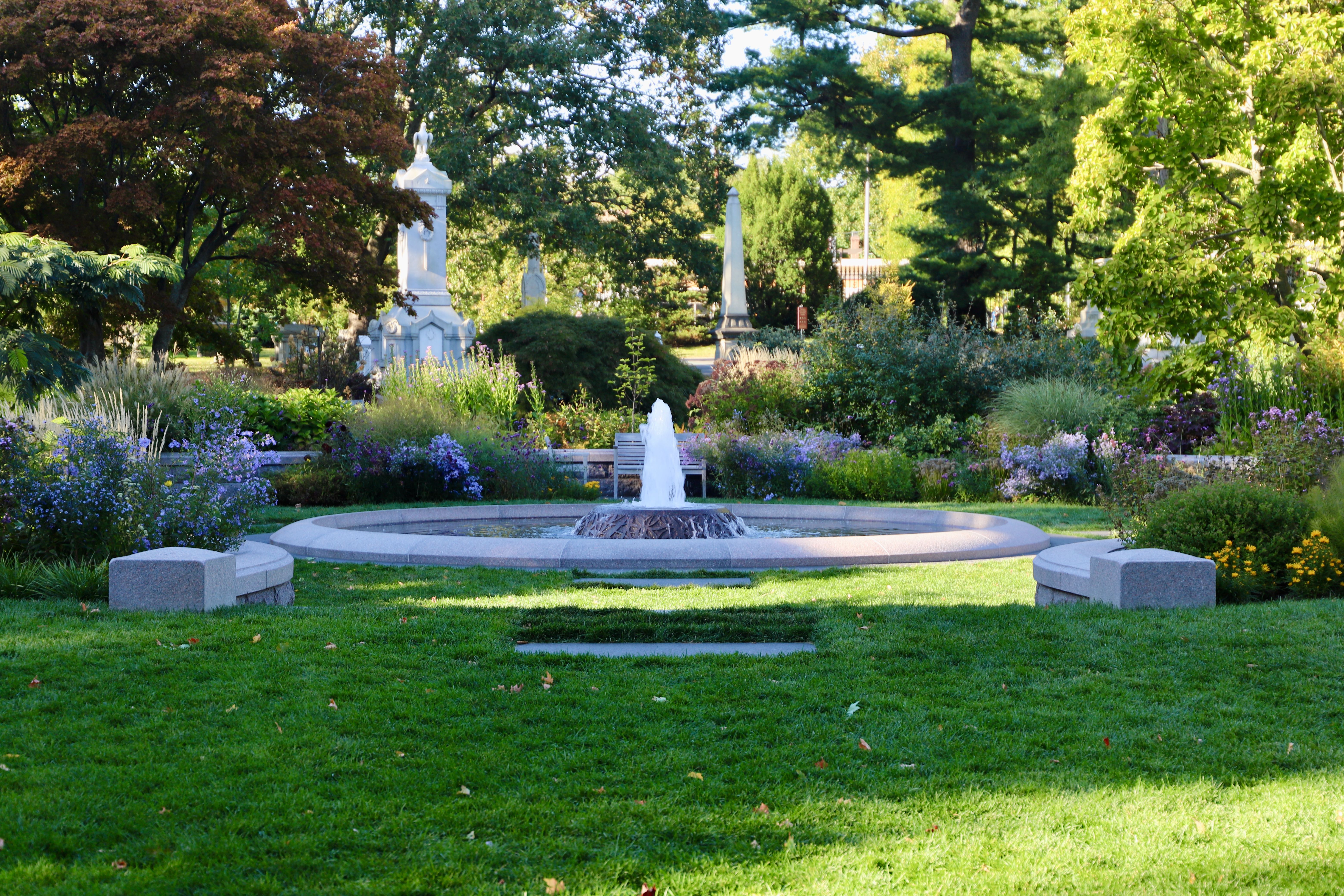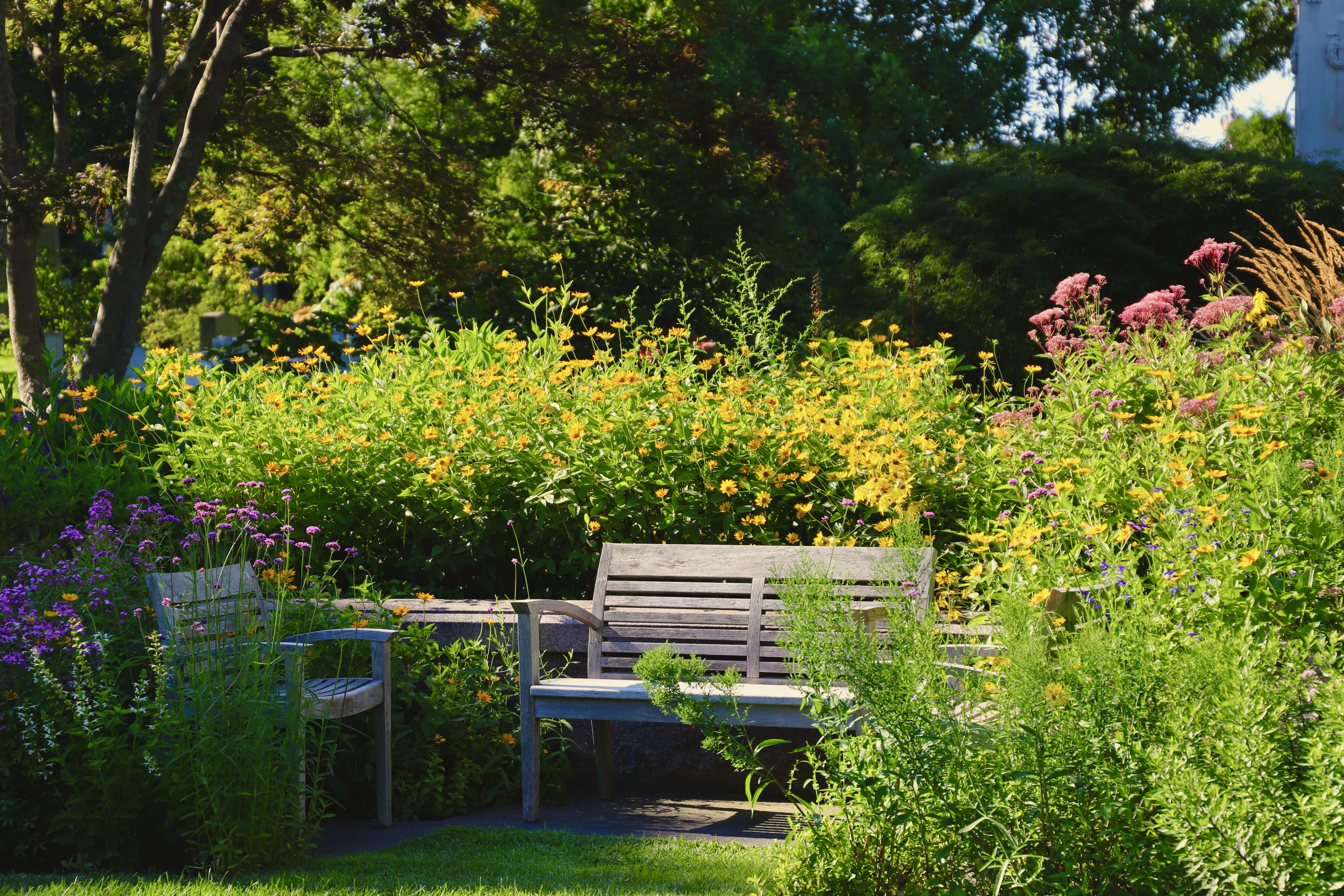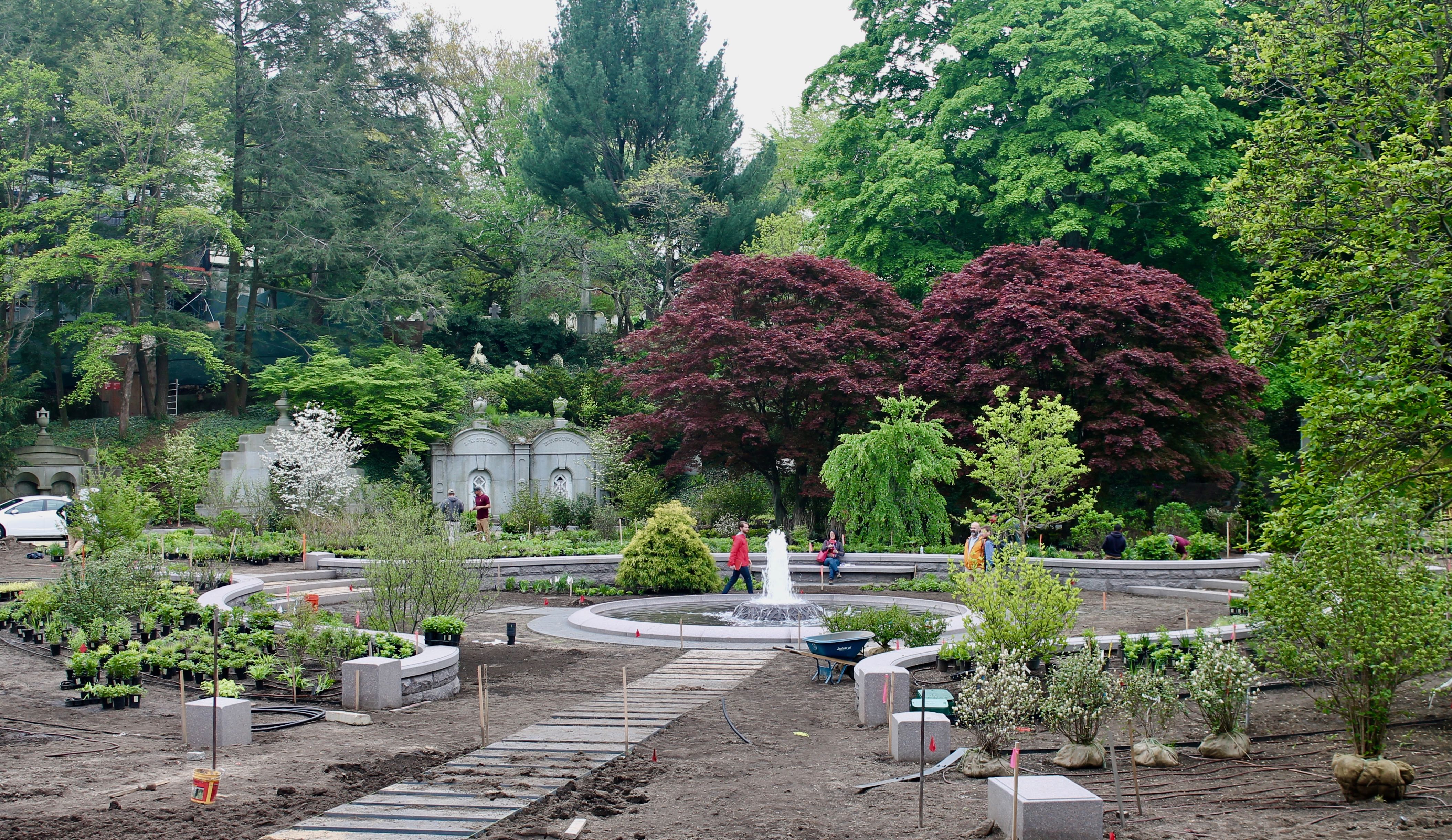
Revitalizing Asa Gray Garden
In collaboration with the award-winning landscape architecture firm Halvorson Design Partnership, Mount Auburn has re-imagined Asa Gray Garden, its most significant public space, to embody the Cemetery’s best qualities: a landscape of exquisite beauty comforting the bereaved and inspiring all who visit. Within the renovated Garden, visitors enjoy a diverse selection of plants that provide year-round color, texture, and interest. Strategically placed seating and a new central water feature foster a sense of contemplation for those in need of a place to reflect. An improved circulation system through and surrounding the Garden provides greater access and encourages more visitors to explore its many special features. Carefully planned views into and out of the Garden help to knit this important horticultural landmark into its surroundings while also connecting it to the other key architectural features, including Bigelow Chapel, that define the Cemetery’s Entrance.
A Garden to Welcome and Inspire
Asa Gray Garden is the place from which most visits to Mount Auburn begin. Lawn Avenue, the road surrounding the Garden, provides visitor parking within sight of the Cemetery’s Entrance and Visitor Center. Families coming to Mount Auburn to attend a memorial service in one of its two chapels or assembling prior to a burial on the grounds also rely on Lawn Avenue and Asa Gray Garden as a place to gather. Despite its premier location by the Entrance and the heavy use of the road surrounding it, the actual garden had been largely overlooked before its revitalization in 2018. The 2018 renovation restored prominence to the Garden and reestablished its role as a significant destination within the Cemetery.
Ripe with educational benefits, the Garden features prominently on guided tours. Sharing the story of the Garden’s evolution through time will help to educate visitors about the Cemetery’s history as an ever-changing landscape that reflects two centuries of design and horticultural practices. Specimens from the Garden are regularly highlighted on horticulture-themed walking tours and its plant collection helps to interpret and celebrate the important legacy of the its namesake, botanist Asa Gray.
An Impressive Display Garden with a Story
For several years, the horticultural staff has been actively working to extend periods of bloom throughout the spring and summer months and increase fall and winter-time interest by diversifying the plant collections of the Cemetery. The carefully-curated collection of trees, shrubs, flowering perennials and annuals, bulbs, and grasses selected for Asa Gray Garden provide color, texture, and unique interest in all four seasons, ensuring that it exemplifies one of the defining characteristics of the Cemetery’s larger landscape.
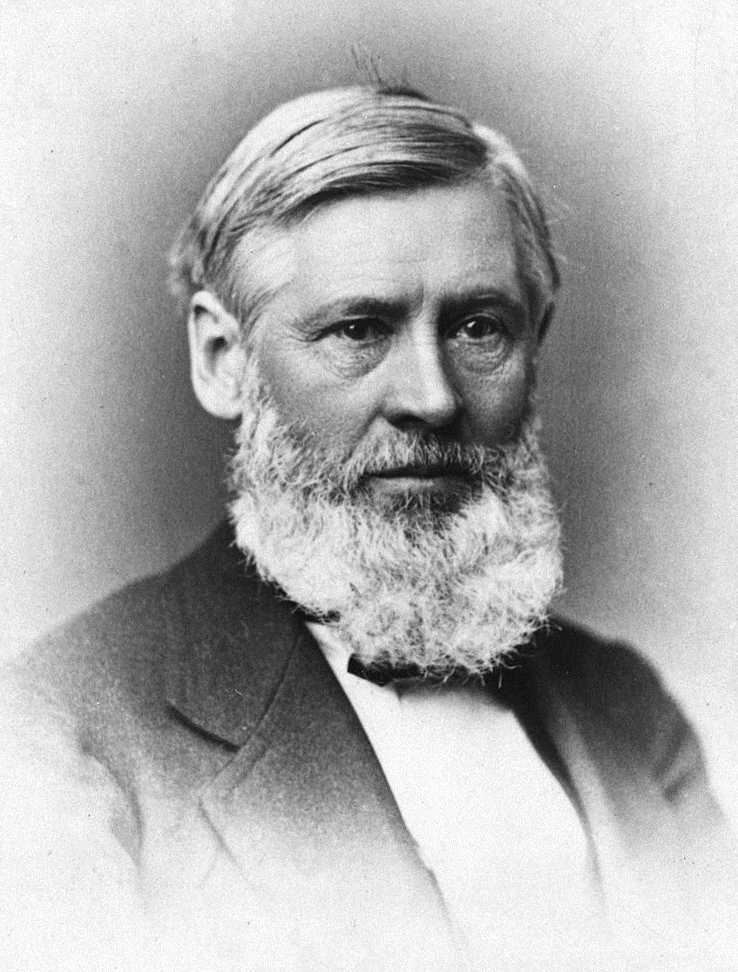
Though transforming Asa Gray Garden into an impressive horticultural display garden was the primary goal of the renovation, the 130 species of plants included in the layout have been selected for more than just aesthetic qualities. Appropriate pairings of plant species indigenous to the Eastern United States and their counterparts indigenous to East Asia will celebrate the important botanical research of Harvard University professor Asa Gray (1810–1888), for whom the Garden is named. In the course of Gray’s ground-breaking work with herbarium specimens, he noted the striking similarities between American and Asian species. He advanced the hypothesis that these species had descended from common ancestors and developed subtle differences during their long separation on different continents. Gray was one of the leading American collaborators of Charles Darwin, and his work supporting Darwin’s theory of natural selection and species evolution helped to establish international respect for American scientific traditions. Gray was buried at Mount Auburn following his death in 1888. In the early 1940s the Cemetery’s Trustees voted to rename the Garden, previously known as “the Lawn,” in Gray’s honor. With the new plantings, the renovated Garden becomes a living tribute to the “Father of American Botany,” helping to tell the story of his important work.
In addition to celebrating Asa Gray in a more dynamic way, the use of Asian species within the Garden references Mount Auburn’s long history of using non-native ornamental plants to add interest and diversity to the landscape. From early in its history, Mount Auburn benefited from the great age of plant exploration, adding specimens from around the world to its collections. While our landscape today has certainly benefitted from these exotic plant introductions, we have also learned valuable lessons about the potential dangers of some of these species becoming invasive and detrimental to native habitats and the environment. These lessons have been carefully considered with the plant selections chosen for Asa Gray Garden. Among their many other values, the selected plants are often used to foster a public conversation about responsible use of non-native species. In keeping with one of Mount Auburn’s key strategic initiatives to be a model of environmental stewardship, we are committed to utilizing the renovated Garden to help us teach about the importance of plant biodiversity as we respond to climate change, while also emphasizing the potential dangers of plant introductions from other parts of the world.


